Part of a series of articles titled Park Paleontology News - Vol. 17, No. 1, Spring 2025.
Article
The Ancient Floral Splendor and Paleoenvironments of Grand Canyon National Park
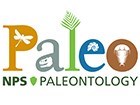
Article by Katherine M. M. Bober, Texas A&M University
Introduction
Grand Canyon National Park (GRCA) is one of the most well-known areas of the United States of America. For decades, visitors have viewed its superlative geological formations (Figure 1) and the views down to the Colorado River, which has been cutting through these formations for several million years here.
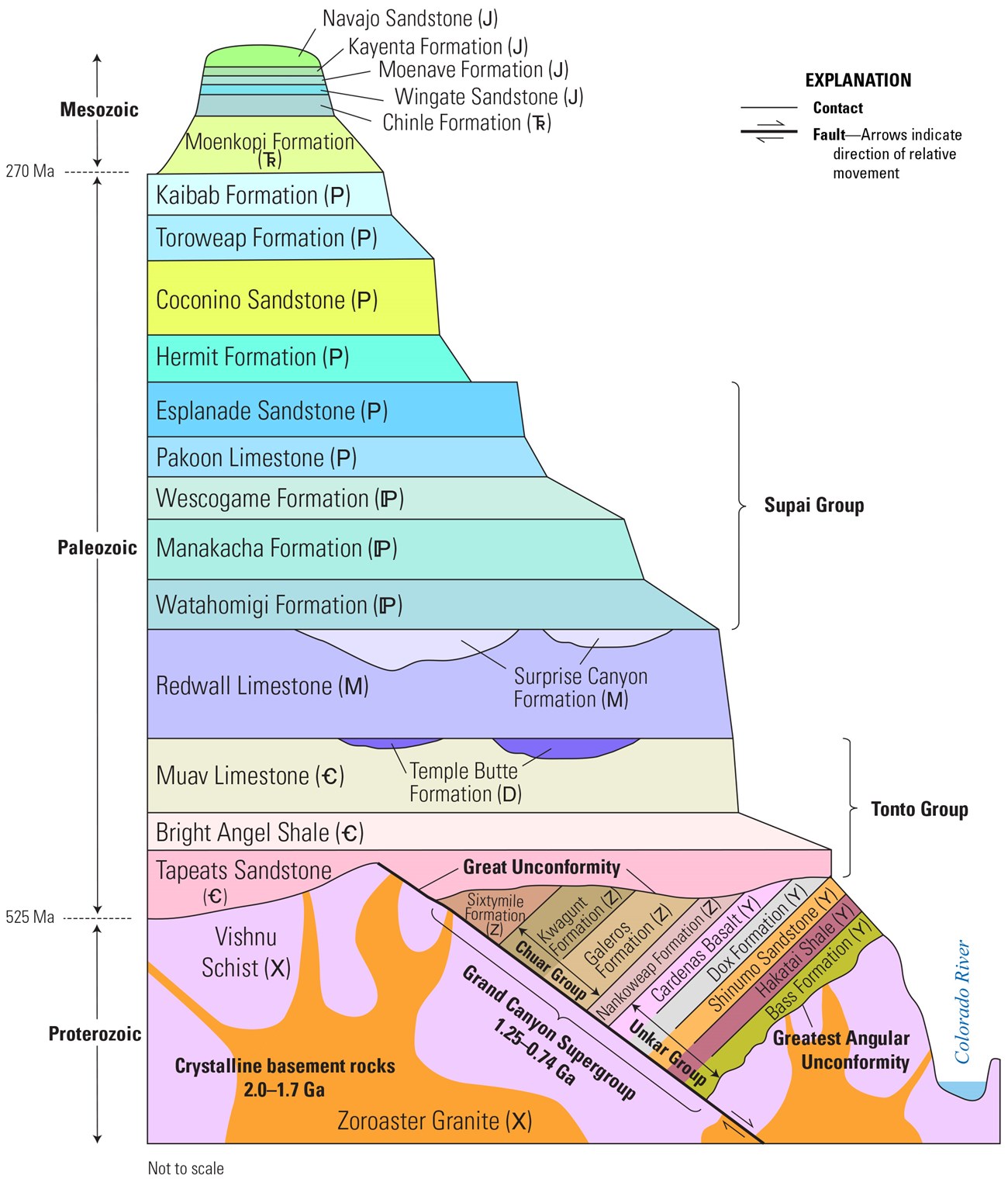
Billingsley et al. (2019)
But what lies within the exposed rocks of the Grand Canyon? What can we see beyond the majestic views that GRCA affords us? There are a multitude of fossils within GRCA, and each find is an important part of the story of the Colorado Plateau. Indeed, both the fossils and the rocks in which they are preserved tell a story of the different paleoenvironments of the Grand Canyon.
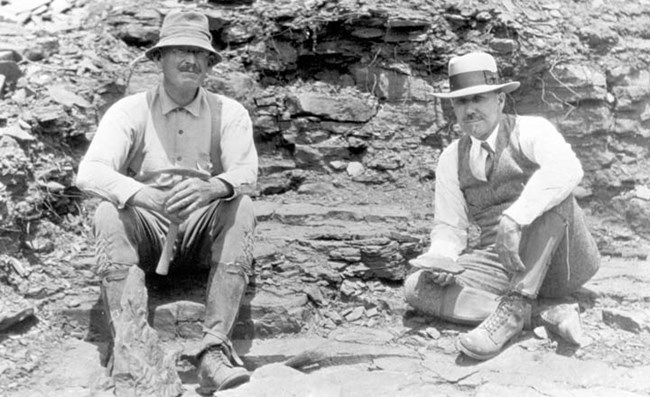
NPS
History of Paleobotany in GRCA
The bulk of paleobotanical research within GRCA took place in the first half of the 20th century, but there have been investigations in the 1980s, 1990s, and more recently in the 21st century. Plant fossils within the Hermit Formation were first discovered by Charles Schuchert in 1915 (Schuchert, 1918). During the summers of 1926 to 1928, David White (Figure 2), a paleobotanist who worked for the United States Geological Survey, collected field specimens after being sent samples by Schuchert back in 1918 (Knight, 2021). White wrote a monograph in 1929 that named 25 new genera and species of plants found in the Permian-age Hermit Formation in the park: these new species included examples from conifer, seed fern and horsetail families (White, 1929).
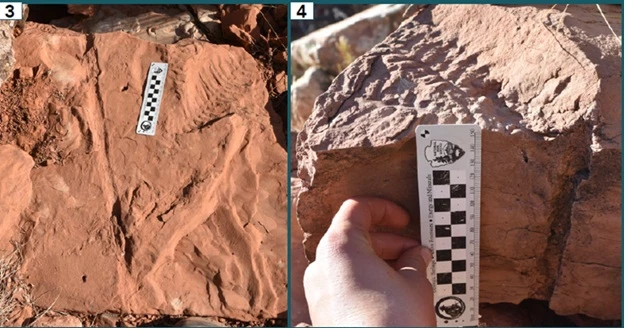
Pulsipher et al. (2024)
Fossil Plants of GRCA
There are several formations within GRCA that contain fossil plants. The oldest and youngest, the Bright Angel Shale and the Kaibab Formation, contain only algae and palynomorphs (microscopic non-mineralized fossils of things such as pollen and spores), while there are fossils of vascular plants within the other strata. The Hermit Formation has had recent paleobotanical field work (Pulsipher et al., 2024) while the Surprise Canyon Formation and the Supai Group have not. Unidentified plant fragments within these latter two may provide an avenue for future research as well.
The history of ancient plants within GRCA starts with the Bright Angel Shale (deposited during the Middle Cambrian, approximately 505 million years ago). This formation has assortment of clusters, dyads, and other forms of palynomorphs from terrestrial (freshwater) algae (Baldwin et al., 2004). The Bright Angel Shale was formed in a shallow marine environment with a possible freshwater input nearby due to the presence of the palynomorphs (Baldwin et al., 2004).
The Surprise Canyon Formation, from which fossil plants have been collected in the western half of GRCA, was deposited during the Late Mississippian (approximately 325 million years ago). Fossil plants of the Surprise Canyon Formation include horsetails, ferns, and seed ferns as well as a variety of palynomorphs and plant fragments (Tidwell et al., 1992; Billingsley and McKee, 1982). Among these are the “fruiting organs” of a horsetail-like plant and small, delicate leaf fragments of a seed fern (Knight, 2021). The depositional environments included rivers, estuaries, and shallow marine settings (Connors et al., 2021).
The Supai Group, from which fossil plants have been collected in the eastern half of GRCA, was deposited from the Early Pennsylvanian to the middle Early Permian (approximately 325–285 million years ago). The depositional environment of the eastern part of the Watahomigi Formation was likely deltaic and has fossils such as horsetails, seed ferns such as Neuropteris, Taeniopteris, and conifer-like cordaiteans and Walchia. The remainder of the Supai above the Watahomigi is eolian or wind-deposited (McKee, 1982; Blakey, 2003).
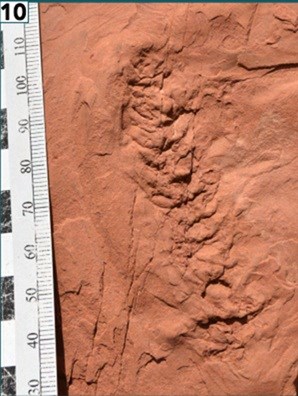
Pulsipher et al. (2024)
The Kaibab Formation was deposited toward the end of the Early Permian (approximately 275 million years ago) in a shallow tropical sea, and as a result its plant fossils are limited to mineralized green algae (Baldwin et al., 2004; Connors et al., 2020). The Hermit Formation, from which fossil plants have been collected in the eastern half of GRCA, was deposited during the Early Permian (approximately 280 million years ago).
The Hermit Formation has yielded seed ferns such as callipterids and Supaia (Figure 3) and seed ferns account for most of the plant fossils. Other plant groups include conifers (Figure 4) such as Walchia and taeniopterids. The lower Hermit Formation was deposited in a semi-arid environment with rivers while the upper Hermit Formation was formed in a lower energy environment as shown by undamaged fronds and finer sediment. One possible explanation is episodes of rapid flooding (White, 1929; Pulsipher et al., 2024).
Conclusion
These fossil plants and the rocks that preserve them are indicators of paleoenvironments, but the fossils themselves are also of interest for the preserved reproductive structures and preserved growth positions. Collaborative efforts between National Park Service staff, the USGS, and other researchers have been instrumental in uncovering the paleobotanical history of one of the most famous sites in the United States. Future efforts in GRCA should be encouraged as evidenced by the recent endeavors of Pulsipher et al. (2024). After all, it’s borne such exquisite fruit.
References
Baldwin, C.T. et al. 2004 “Palaeoecology of the Bright Angel Shale in the eastern Grand Canyon, Arizona, USA, incorporating sedimentological, ichnological and palynological data,” Geological Society, London, Special Publications. Geological Society of London.
Billingsley, G. H., and S. S. Beus. 1985. The Surprise Canyon Formation: An Upper Mississippian and Lower Pennsylvanian(?) rock unit in the Grand Canyon, Arizona. Pages A27–A33 in Stratigraphic notes, 1984. U.S. Geological Survey, Washington, D.C. Bulletin 1605-A.
Billingsley, G. H., G. Goodwin, S. E. Nagorsen, M. E. Erdman, and J. T. Sherba. 2019. Geologic field photograph map of the Grand Canyon region, 1967–2010. U.S. Geological Survey, Reston, Virginia. General Information Product 189.
Billingsley, H., and E. D. McKee. 1982. Pre-Supai buried valleys. Pages 137–153 in E. D. McKee. The Supai Group of Grand Canyon. U.S. Geological Survey, Washington, D.C. Professional Paper 1173.
Blakey, R. C., Beus, S. S., & Morales, M. 2003. Supai group and hermit formation. Grand Canyon Geology, 2, 136-162.
Connors, T. B., Tweet, J. S., & Santucci, V. L. 2020. Stratigraphy of Grand Canyon National Park. Grand Canyon National Park: Centennial Paleontological Resource Inventory, 45-74.
Knight, C. 2021. Paleozoic paleobotany of Grand Canyon National Park. Pages 119–130 in Santucci, V.L., and Tweet, J.S., editors. Grand Canyon National Park Centennial Paleontological Resources Inventory —A Century of Fossil Discovery and Research: Utah Geological Association Special Publication 1.
Mamay, S. H., and A. D. Watt. 1971. An ovuliferous callipteroid plant from the Hermit Shale (Lower Permian) of the Grand Canyon, Arizona. Pages C48–C51 in Geological Survey Research 1971. U.S. Geological Survey, Washington, D.C. Professional Paper 750–C.
McKee, E. D. 1982. The Supai Group of Grand Canyon. U.S. Geological Survey, Washington, D.C. Professional Paper 1173.
Pulsipher, M.A., Miller, A.E., Nebel, M.L., Looy, C.V., Duijnstee, I.A.P., Schiffbauer, J.D. 2024. Bringing the Hermit out of hiding: a reinvestigation of the Permian Hermit flora in Grand Canyon National Park after nearly a century in obscurity [Poster]. North American Paleontological Convention, Ann Arbor, MI.Schuchert, C. 1918. The Cambrian of the Grand Canyon of Arizona. American Journal of Science (4th series) 45:362–369.
Spamer, E. E. 1992. The Grand Canyon fossil record: A source book in paleontology of the Grand Canyon and vicinity, northwestern Arizona and southeastern Nevada. Geological Society of America, Boulder, Colorado. Microform Publication 24.
Tidwell, W. D., J. R. Jennings, and S. S. Beus. 1992. A Carboniferous flora from the SurpriseCanyon Formation in the Grand Canyon, Arizona. Journal of Paleontology 66(6):1013–1021.White, C. D. 1929. Flora of the Hermit shale, Grand Canyon, Arizona. Carnegie Institution of Washington Publication 405.
Last updated: May 16, 2025
